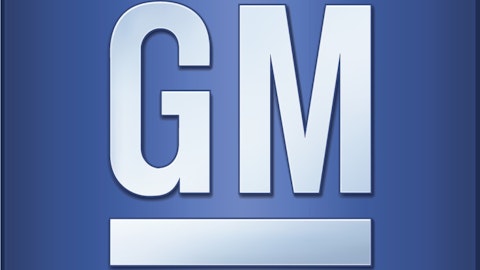
The stock is up nearly 23% this year, even while companies like Johnson & Johnson (NYSE:JNJ) have disclosed lower-than-expected growth in surgical procedures. Moreover, the spinoff of Covidien plc (NYSE:COV)’s pharmaceuticals business (to be called Mallinckrodt) turns it into a pure-play medical device company. Why is Covidien plc (NYSE:COV) outperforming its sector, and what can investors expect in future from the company?
Covidien plc (NYSE:COV) offers inexpensive, cost-effective solutions
Firstly, while the overall medical device market is bedeviled with weak spending patterns, Covidien plc (NYSE:COV)’s solutions tend to come at much lower ticket prices than many of its competitors. This means that a lot of its solutions fall under the radar of items earmarked for cutbacks.
However, other companies in the sector have not fared so well. For example, on its last conference call Johnson & Johnson (NYSE:JNJ) described the hospital capital spending market as being in a recession for the last 10 to 12 quarters. Indeed, Johnson & Johnson (NYSE:JNJ) only recorded 0.5% growth (excluding acquisitions) in its medical device & diagnostics division.
Meanwhile, Covidien plc (NYSE:COV) managed to grow constant currency revenues by 5% in the last quarter, despite coming up against some difficult comparables in its vascular product sales.
A breakout of its product revenue growth reveals pretty solid growth, and on its conference call, management affirmed its belief that growth would continue “to be slightly above market.”

Source: Company SEC filings.
Second, many of Covidien’s solutions actually enable hospitals to reduce costs. For example, its energy devices division has some of the world’s leading minimally invasive surgical (MIS) equipment.
Covidien’s MIS solutions allow hospitals to create better patient outcomes, and save costs by reducing outpatient days. Such properties mean that hospitals keen on restraining spending will still consider making purchases. Moreover, in previous conference calls, Covidien argued that it could generate growth by increasing MIS use in procedures such as hysterectomies and colorectal surgery.
Emerging markets, obesity, and cost savings
Third, emerging markets present a strong growth opportunity. According to company presentations, Covidien plans to reach $2 billion in emerging market sales within the next couple of years. The current percentage of overall sales from emerging markets is around 15%, and a move to $2 billion would probably take it nearer to 20%. This looks achievable, because in this quarter alone, Covidien recorded “operational sales growth in the mid-teens and double-digit increases in most product lines” within emerging markets.
This compares favorably with what General Electric Company (NYSE:GE) reported in its health-care division recently. General Electric Company (NYSE:GE) outlined that its emerging-market growth was up 10%, while developed-market revenues declined 4%. In the end, General Electric Company (NYSE:GE)’s health-care revenues were flat on the last quarter.
The first two reasons discussed above are a big part of Covidien’s appeal to hospitals in emerging markets. Its products are not the kind of high-ticket capital machinery solutions that will make poorer countries balk at up-front purchases. In addition, areas like endomechanical and energy devices (MIS) enjoy significant growth potential because they haven’t yet expanded much into those emerging markets.
The fourth reason why Covidien can generate growth relates to the kind of procedures that its equipment serves. Previously, management has outlined that bariatric (weight-loss) procedures are one of its most important profit drivers. Frankly, with more than one-third of U.S. adults obese, the demand for bariatric surgery isn’t going away anytime soon.
Finally, spinning off Mallinckrodt will allow Covidien to focus on investing as a pure medical device company. This is likely to mean more acquisitions, and a heavy focus on emerging markets. It should also enable the company to cut some corporate costs. Indeed, management outlined programs designed to trim around $400 million from its budget.
Investors should look out for more disclosure in the upcoming investor day event in September. Covidien’s management is very good at this sort of thing. For example, despite a string of acquisitions, it managed to reduce headcount by around 5% over the last four years.
Where next for Covidien?
In conclusion, this was a pretty strong quarter for Covidien. Unlike Johnson & Johnson (NYSE:JNJ) and General Electric Company (NYSE:GE), it managed to generate some good growth from medical device sales, despite a sluggish hospital spending environment. In the long-term its growth prospects look assured, and the stock is one of the most attractive in its sector. In the near term, it has managed to get over a tricky quarter in its vascular business, and there is likely to be some upside to come from its cost-cutting initiatives.
Analyst estimates call for $4.04 in EPS for 2014, which puts the stock on a forward valuation of around 15.8 times earnings. If you are happy to pay this valuation for a company with solid 4% to 6% revenue growth prospects, and earnings growth forecast in the high-single-digits, go ahead and buy the stock.
In my view, it looks fairly valued for now, but I wouldn’t bet against management’s ability to generate future cost savings and margin expansion. With this in mind, it’s well worth closely following what the management says in its investor day presentation in September.
The article 5 Reasons This Stock Can Surpass Its Sector originally appeared on Fool.com and is written by Lee Samaha.
Lee Samaha has no position in any stocks mentioned. The Motley Fool recommends Covidien and Johnson & Johnson. The Motley Fool owns shares of General Electric Company and Johnson & Johnson. Lee is a member of The Motley Fool Blog Network — entries represent the personal opinion of the blogger and are not formally edited.
Copyright © 1995 – 2013 The Motley Fool, LLC. All rights reserved. The Motley Fool has a disclosure policy.




